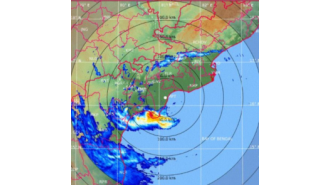Do I Know Enough to Get a Job as a Contact Tracer?
Though requirements vary from state to state, many of them are hiring thousands of contact tracers in an effort to curb coronavirus spread. Here’s a brief quiz to check your knowledge.

States across the country are scrambling to hire tens of thousands of contact tracers, who will play a key role in keeping the coronavirus contained.
Many experts I interviewed said that a high school diploma should be sufficient for a basic contact tracing job, though teams should be led by an experienced public health worker. Indeed, this could be an opportunity for the U.S. to provide employment for thousands of people who have recently lost their jobs.
But every state has different requirements. Georgia’s basic contact tracing role requires at minimum a high school diploma, while New York City requires at minimum either a bachelor’s degree with 12 semester credits in health education or the sciences, or a high school diploma along with four years of job experience in health promotion or disease intervention.
Dr. Emily Gurley, an associate scientist at the Johns Hopkins Bloomberg School of Public Health and the instructor of an online course on contact tracing, which is required for all New York contact tracers, described the job as “part disease detective, part social work, part therapist.” The hardest parts of the job, she said, aren’t necessarily tracking down people’s contacts, but rather the heavy conversations when delivering difficult news, such as when a tracer has to tell a patient to isolate at home, but that person is the sole breadwinner for the family.
Gurley’s six-hour course, which is free to the public, covers technical information, such as how the virus transmits, as well as guidance on how to build rapport and communicate effectively. Inspired by her course, here’s a mini quiz to see how well you know the fundamentals of contact tracing. If you’d like to read up first, here’s my deep dive on the subject.
A. Anyone who lives in the patient’s household or is a co-worker.
B. Anyone who has been within 6 feet for more than 15 minutes.
C. Anyone with whom the patient remembers spending more than five minutes.
A. They’re the same thing. The words are interchangeable.
B. Isolation means you have to stay away from everyone, and quarantine means you can still go out, but you have to monitor your symptoms.
C. Isolation is the term used for confirmed COVID-19 patients, while quarantine is the term used for exposed contacts. In both cases, you need to stay away from other people.
A. Yes, she’s free to leave home.
B. No, her isolation’s not over yet. (Bonus points if you can explain why.)
A. May 21
B. May 24
C. May 25
A. Usually two days, but it could be as long as seven days.
B. Usually five days, but it could be as short as two days or as long as 14 days.
C. Usually 14 days.
(Answers: 1. B, 2. C, 3. B, It hasn’t been 10 days since symptoms began, 4. A. Quarantine is defined at 14 days since the last day of exposure, 5. B.)






